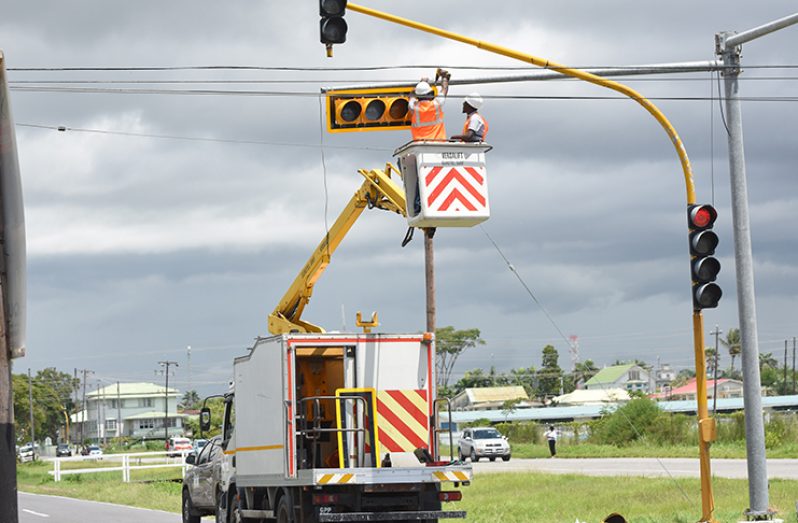THE Ministry of Public Infrastructure through an $87M programme, has moved to install new traffic signal infrastructure at 51 intersections in the country with several others expected by the first quarter of 2019.
Over the last few weeks, several road signs, traffic controller systems and traffic signal heads have been installed even as the entire venture will also see the installation of camera detection and pedestrian access systems.
The upgrades are being implemented through a number of projects which fall under the ‘Maintenance of Other Infrastructure’ and ‘Infrastructural Development’ programmes of the Ministry of Public Infrastructure (MoPI).
The Ministry’s Traffic & Highway Lights Department informed the Guyana Chronicle that works will be focused on existing signalised intersections and seven additional intersections will see upgrades in the near future.
These include Sandy Babb & Vlissengen Road/Irving Street; East Bank Demerara Public Road and Demerara Harbour Bridge access road (Peter’s Hall); East Bank Demerara Public Road and Eccles Access Road; Main Street and Church Streets; Camp Street and Lamaha Streets; Main Street and Lamaha Streets and Vlissengen Road and Homestretch Avenue.
The upgrades are aimed at promoting safety for all categories of road users who maneuver through the signalised intersections and come along with numerous advantages compared to the previous traffic signal systems.
They offer vehicular actuation through the use of camera detection systems whereby the time allocated for vehicular movement along each corridor is determined dynamically rather than on a pre-determined basis.
Meanwhile, pedestrian access systems will make provisions for pedestrians to safely cross the roadways based on demands rather than at a pre-determined time while also producing an audible signal to alert the differently-abled when to cross.
The designs of the new infrastructure are also more resilient with better cooling of electrical components along with enclosures built with material better suited for Guyana’s climatic conditions.
The traffic control unit itself features an open architecture modular design that makes it simpler to perform functional system upgrades, easier to source spare parts and promotes convenient maintenance at a lower cost.
With supportive telecommunications infrastructure, the ministry says that the new traffic light systems make provisions for remote system monitoring and control.
In addition, synchronisation between signalised intersections is possible through the use of reliable Global Positioning System (GPS) systems and traffic management software.




.png)









